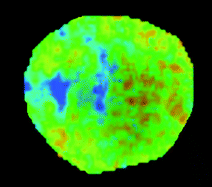Electrochemical impedance spectroscopy and fluorescence lifetime imaging of lipid mixtures self-assembled on mercury†
Abstract
Monolayers and bilayers of

* Corresponding authors
a
Department of Chemistry, Florence University, Via della Lastruccia 3, Sesto Fiorentino, Firenze, Italy
E-mail:
lucia.becucci@unifi.it
Fax: (+39) 055-457-3385
Tel: (+39) 055-457-3095
b ISC, Istituto dei Sistemi Complessi del CNR, CNR, Via Madonna del Piano, 10, Sesto Fiorentino, Firenze, Italy
c Department of Physical Chemistry, Venice University, Calle Larga S. Marta 2137, Venezia, Italy
Monolayers and bilayers of

 Please wait while we load your content...
Something went wrong. Try again?
Please wait while we load your content...
Something went wrong. Try again?
L. Becucci, S. Martinuzzi, E. Monetti, R. Mercatelli, F. Quercioli, D. Battistel and R. Guidelli, Soft Matter, 2010, 6, 2733 DOI: 10.1039/B923895F
To request permission to reproduce material from this article, please go to the Copyright Clearance Center request page.
If you are an author contributing to an RSC publication, you do not need to request permission provided correct acknowledgement is given.
If you are the author of this article, you do not need to request permission to reproduce figures and diagrams provided correct acknowledgement is given. If you want to reproduce the whole article in a third-party publication (excluding your thesis/dissertation for which permission is not required) please go to the Copyright Clearance Center request page.
Read more about how to correctly acknowledge RSC content.
 Fetching data from CrossRef.
Fetching data from CrossRef.
This may take some time to load.
Loading related content
